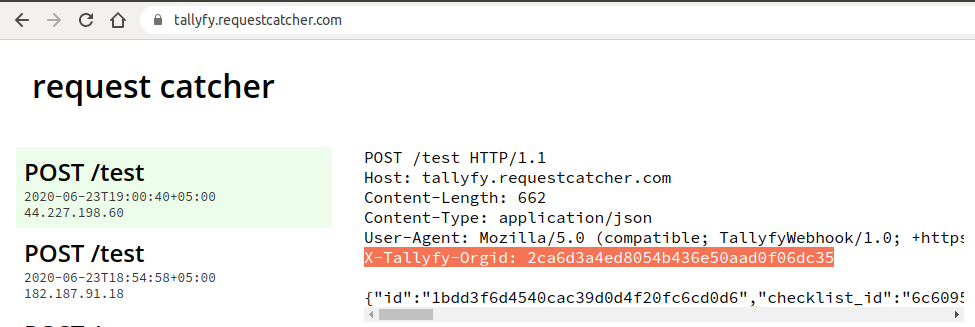How to set up webhooks
A webhook is like throwing a “ball” to a specific link on the web. It allows you to send data and trigger actions at that link. In Tallyfy, you can use templates or step webhooks to automate processes and integrate with other apps.
Template-Level Webhooks
Template-level webhooks are triggered when any task is completed in a process. They send over all the data related to the process. You can find template webhook settings in the “Advanced Settings” drawer of the template.

Template webhook URL
This field is the URL you want the JSON data to be sent.
Template alias
This is the unique way to refer to your specific template.
Step-Level Webhooks
Step-level webhooks are triggered when a specific task is completed. They are useful for integration with middleware. Step webhook settings can be found in the “Advanced” tab.
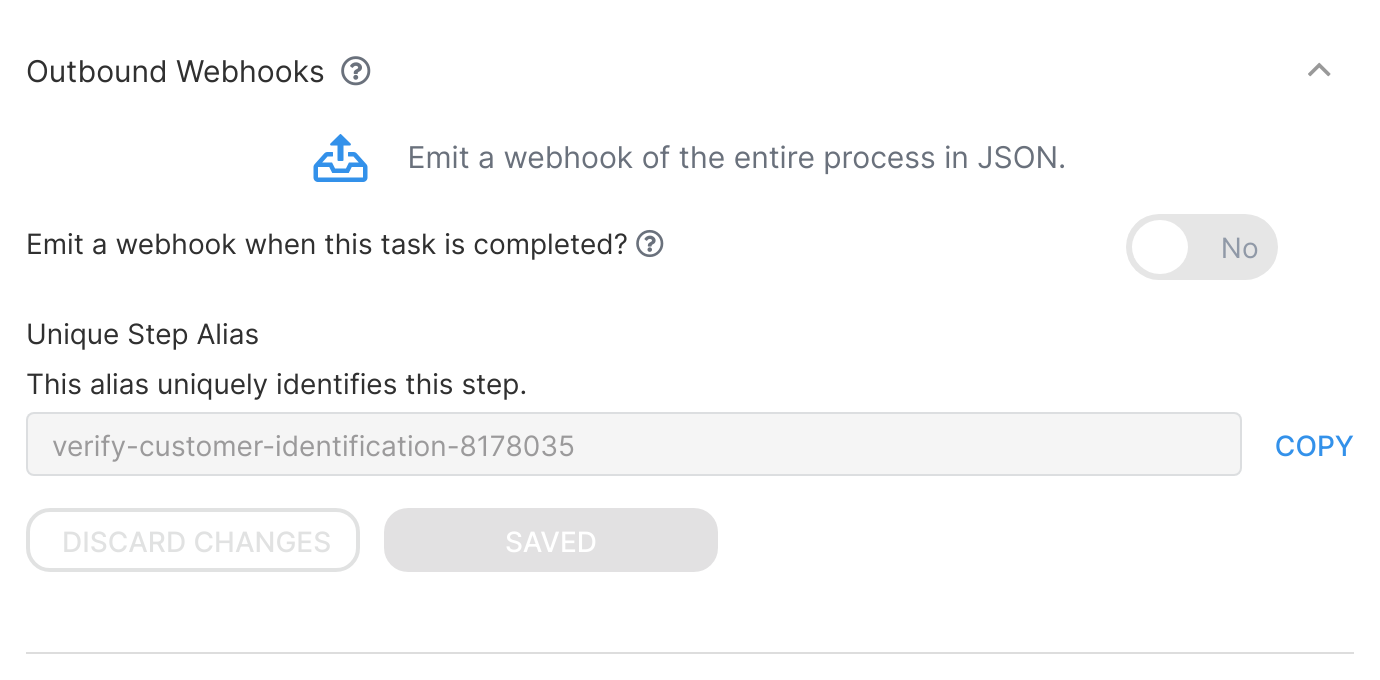
Example - notify #general channel in Slack when an employee completes an onboarding process in Tallyfy.
To set up this integration, you will need:
- A Tallyfy account
- A Zapier account - but just swap this with any other middleware system like Make.com or Power Automate.
- A Slack account
Setting up your middleware system
The example below uses Zapier - but similar methods exist in your preferred middleware platform.
-
Create a new zap and choose ‘Webhooks by Zapier’ as the App in Step 1
-
Select ‘Catch Hook’ as the Trigger Event
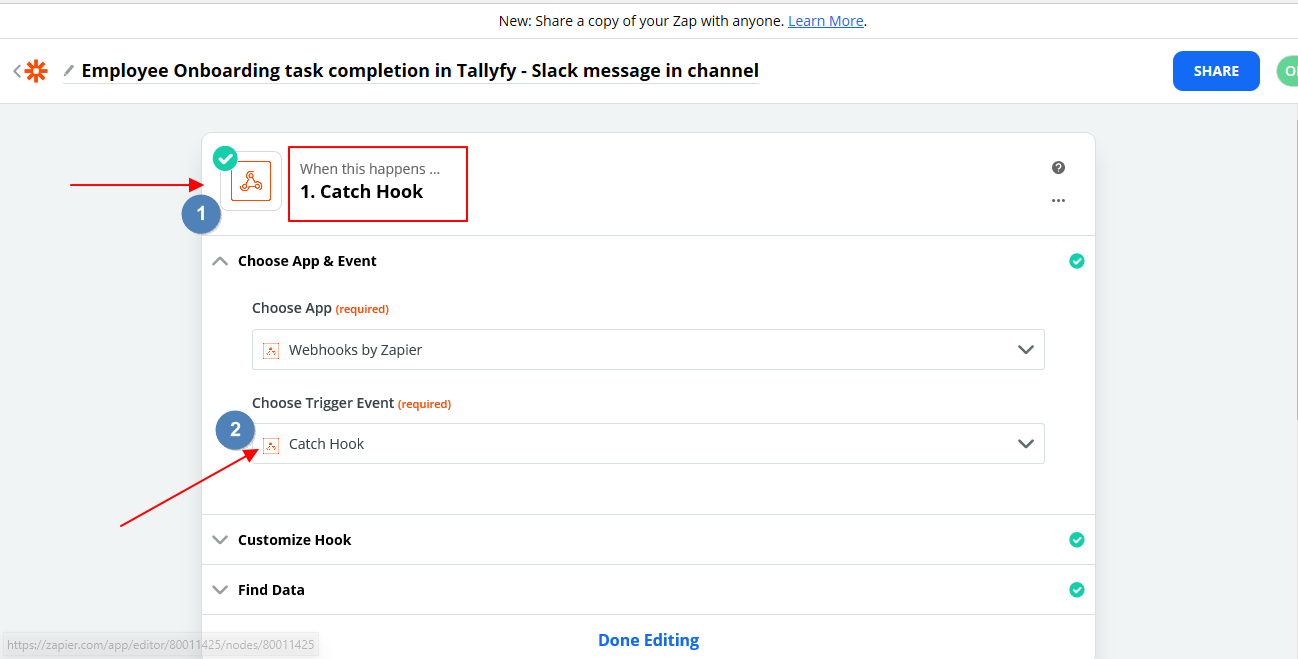
- Copy the custom Webhook URL provided by Zapier - this will be inserted in Tallyfy template
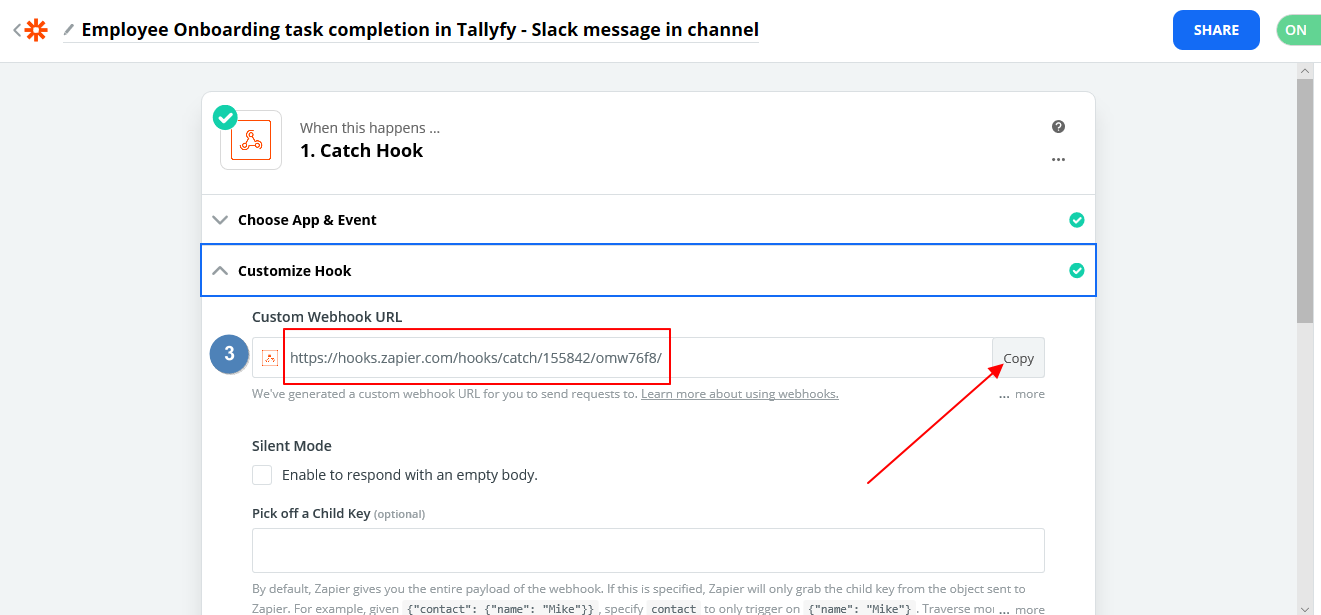
- Choose Slack as the App for the triggered webhook
- Select ‘Send Channel Message’ as the action event
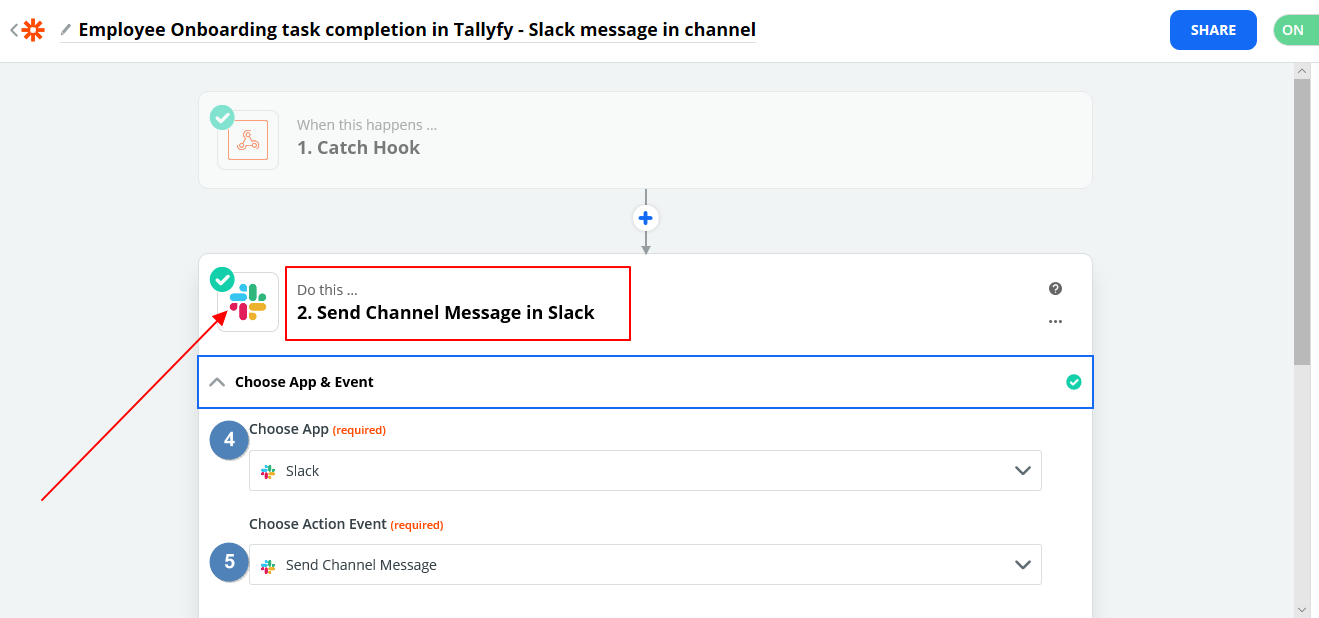
-
Connect your Slack account
-
Choose the channel where you want to post a message
-
Customize the channel message using data from the webhook
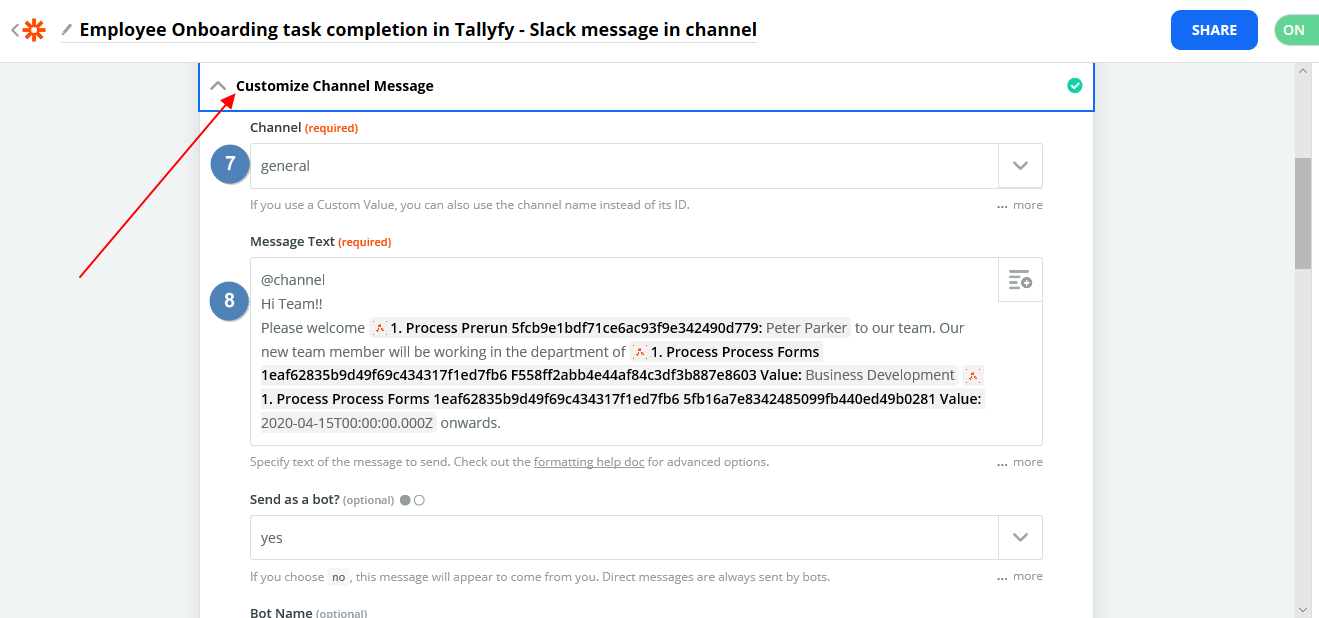
Setting Up The Tallyfy Template
- Go to the ‘Edit’ mode of your template. Select the step that should trigger the automated message in Slack.
- Open the ‘Advanced’ tab
- Turn on the webhook toggle
- Paste the Webhook URL from Zapier into the Template webhook URL field. Save changes
Now, when a task in Tallyfy is completed according to the setup, you will see a sample channel message in Slack.
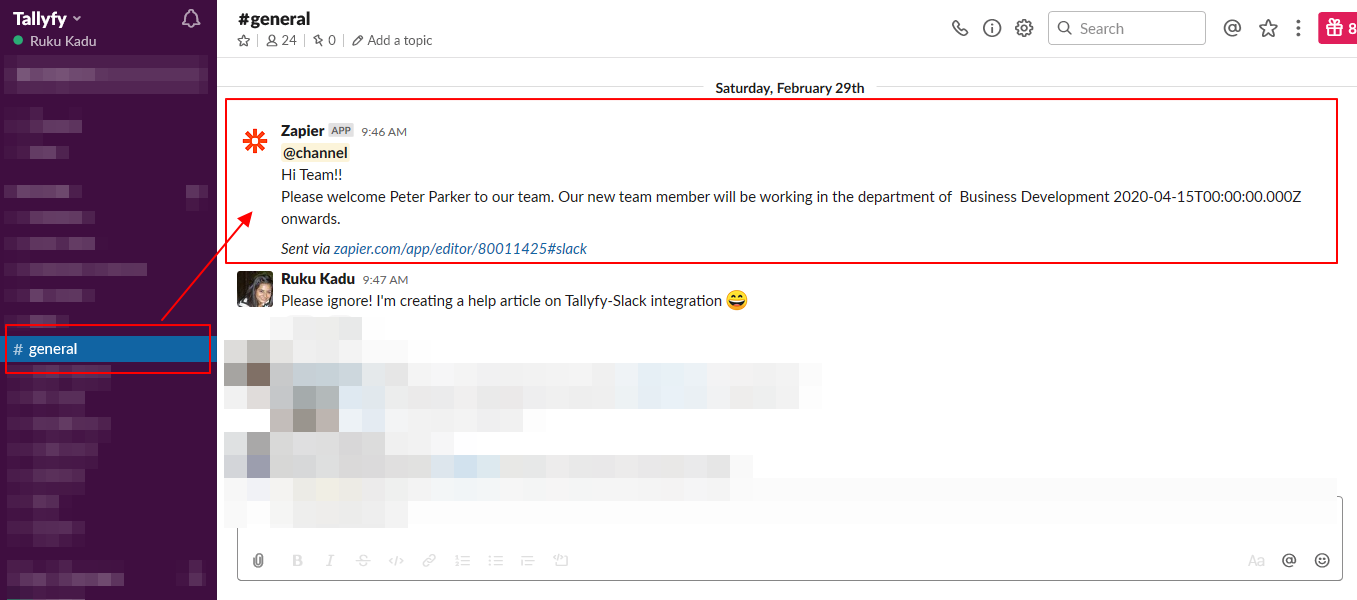
To ensure the security of webhooks from Tallyfy, you can check the X-Tallyfy-OrgID header, which contains your organization’s ID.
